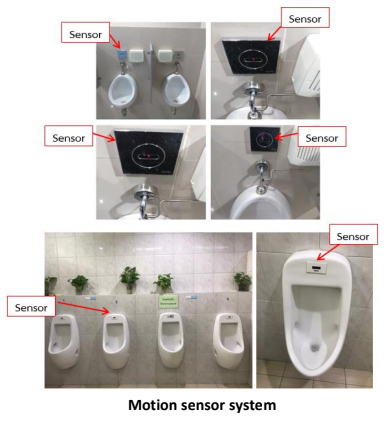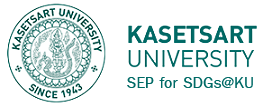
At present, the world is changing rapidly and affecting water resources in many ways. Kasetsart University therefore issues a policy to response to the national strategy on water management in a variety of activities and measures under various projects. For example, 5 Sor activities, green office activities, installation of publicity banners and post on the web pages of sub‐ agencies, including big annual events, such as Agricultural Fair on the theme of work against drought campaign, sports events, etc. In accordance with the educational policy that requires students and the public to participate in activities together, Kasetsart University has organized a study visit and observation activity with public and private agencies, such as the Provincial Waterworks Authority, the Irrigation Department, etc. to increase the opportunity to exchange and learn about effective water management. Meanwhile, to handle drought conditions, there is a policy that focuses on the existing water reservoirs in various areas for maximizing the usage, both in terms of water quality treatment for consumption and use of treated water for maximum benefit. Also, there is the expansion of the area to study the water sources surrounding communities, along with sharing innovation and knowledge of experts in Kasetsart University to develop agencies within KU and in nearby rural areas efficiently and effectively, which can expand the results to develop the degraded areas in order to achieve sustainable allocation of water resources in accordance with the objectives of the sufficiency economy principle of King Rama 9.
4.3 The Use of Water Efficient Appliances (Water tap, toilet flush, etc).

4.3-1 Agricultural irrigation technology – Kasetsart University considers that the problem of dry season and lack of water will become more severe. Therefore, there is an idea to save water in agriculture while enable the plants grow effectively. Plant irrigation technology can be the answer for agriculture. Appropriate and economic plant watering and soil moisturizing allow farmers to have consistent quality products that meet market demand. However, technologies have been collected and cooperated with nearby communities to provide opportunities to learn how to water plants economically and efficiently, reduce the amount of water usage in all campuses. Thus, vegetable irrigation technology is applied to provide appropriate water for plants efficiently.
Public service – Kasetsart University, Sakon Nakhon Campus, builds a local community network and applies the knowledge of community management through learning the problem and resources available in the community, connecting and coordinating with university agencies to achieve consistent and appropriate development for the area, and applying technology to irrigate plants with the needs of the community while reduce the impact from drought.
Agricultural innovation – Kasetsart University has introduced innovative technology for plant irrigation, provided opportunities for neighboring communities to learn economic and appropriate water usage for crops and cultivated areas, soil balancing, sparing water to use during drought for consistent quality produce as required by market with consistent income and productivity through the whole year.
Kasetsart University will build more community networks, expand opportunities for local agriculture in districts or sub-districts to learn about the innovation of watering crops, promote the participation of the community, and add new appropriate innovations of water usage for agriculture with knowledge of value and efficiency.
Kasetsart University cooperates with more government agencies to campaign on water management, promote community participation, and apply new agricultural innovations in the community for further social sustainability.
4.3-2 The university has a sustainable water management policy. Thus, flush toilet with water saving flush system is used by replacing old water with new water for flushing for low water usage and quick time consumption. The flushing push button is located on top of the water tank with two buttons, which saves up to 3 liters of water. Also, automatic water stopper for sink and male urinal allows users to press the button, and the water will then stop flushing automatically. This can help reduce water consumption by more than 75% (as shown in Figure)



4.3-2 Sensor system with motion detector, automatic lamp and fan on-off: Sink sensor system will turn on water flow automatically and stop it immediately when no hand is detected. The toilet sensor system will turn on the water when detect people standing, and stop the water immediately when no one is detected. This can help reduce water consumption by more than 75% (as shown in Figure)
Public service – The university has water management policies campaigning for students and personnel to use water economically for maximum benefit with sustainability, while providing comfort by applying a sanitary system with a motion sensor system to facilitate the disabled and elder as service users.
Agricultural innovation – The university uses water-saving sanitary ware with water sensor system innovation usage in the toilet to save electricity and water by stopping the flow of water and electrical system.
Kasetsart University foresees the importance of adopting new technology or innovation to develop the university and encourage all campuses to use water-saving electrical equipment in order to reduce energy consumption, save water and future budget.
Kasetsart University will add innovation related on efficient electrical equipment in the future to help reduce water bills, electricity bills, and save resources, while support and facilitate the general service users within the university.
Remark : All activities in 4.3 refer to the Sustainable Development Goals (SDGs), otherwise known as the global goals, especially relating to Goal 6: Clean Water and Sanitation which Support and strengthen the participation of local communities in improving water and sanitation management.
